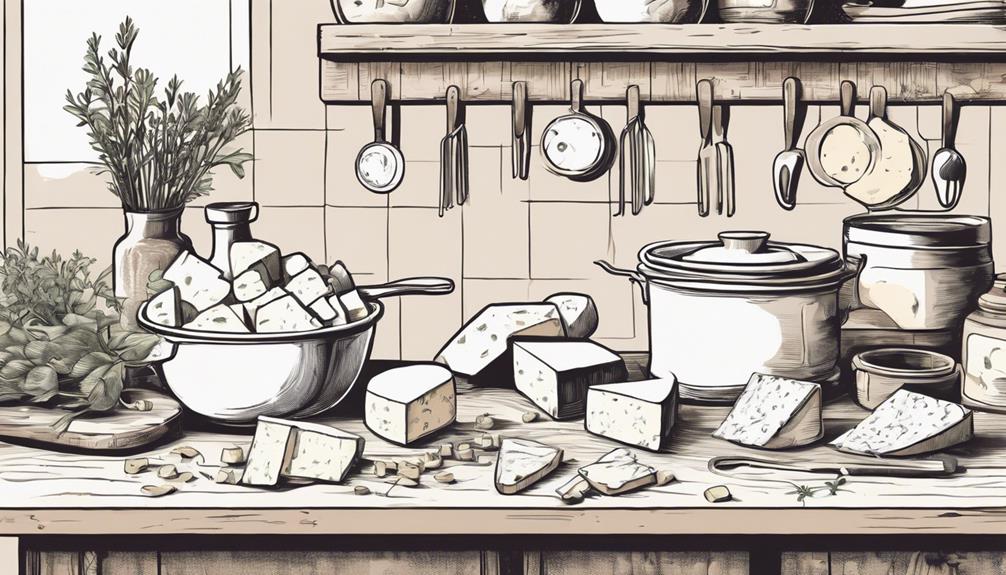How To Become More Self-Sufficient Without Starting a Full-Blown Farm…
Want to start preserving your harvest, making your own soap, or building a backyard root cellar — but not sure where to begin? “Homesteading Advice” gives you instant lifetime access to 35+ practical homesteading books on food preservation, veggie gardening, DIY natural cleaning products (save over $250 per year with this skill alone), brewing, off-grid energy, and a whole lot more…
Click Here To Check It Out Now!
“I’m getting ready to make my first hard cheese and have been reading a lot about using a curd cutter. I’m determined to get it right the first time because I want to enter my cheese in a local fair here in Tasmania! Can you explain in detail how to use a curd cutter and why each step is important?” Thanks, Michael, Hobart, Australia.
How Do You Use A Curd Cutter?
Hey Michael, making hard cheese is an exciting adventure! Using a curd cutter properly is key to achieving the perfect texture for your cheese. Let’s break down the process and understand why each step matters. Shall we?
What Is a Curd Cutter?
The curd cutter is a tool designed to slice the coagulated milk (curds) into smaller pieces. This is essential for releasing the whey and forming the right curd size, which affects the cheese’s moisture content and texture.
Types of Curd Cutters
There are mainly two types:
- Horizontal Curd Cutter: Cuts the curds horizontally.
- Vertical Curd Cutter: Slices them vertically.
These cutters might resemble a giant comb or wire frame and can be used separately or together for a more refined cut.
Preparation Before Cutting
Before using the curd cutter, ensure you have:
- The correct milk temperature: Slightly warm, around 86-90°F (30-32°C).
- A firm set curd: It should break cleanly when tested with a knife.
- Sanitized equipment: Clean tools prevent unwanted bacteria.
The Cutting Process
Here’s a detailed step-by-step guide:
Step 1: Checking the Set Curd
Using a clean knife, gently press into the curd to see if it breaks cleanly. If it does, you’re ready to cut. If not, let it sit a bit longer.
Step 2: Cutting Vertically
Take your vertical curd cutter and slowly immerse it into the curd, slicing down to the bottom of the pot. Move methodically across the curd, spacing your cuts around 1 cm apart.
Why it matters: Consistent cuts help ensure even whey release and uniform curd size.
Step 3: Cutting Horizontally
Now use the horizontal cutter. Rotate it horizontally as you make the cuts, ensuring uniform pieces. If your horizontal cutter has adjustable wires, set it to match the vertical cuts.
Why it matters: This further divides the curds, promoting even moisture content throughout the cheese.
Step 4: Stirring and Healing the Curds
Gently stir the curds to ensure they don’t mat together but remain separate. Let them rest (heal) for around 5 minutes.
Why it matters: Stirring prevents clumping, and resting allows curds to firm up.
Heating and Stirring the Curds
Step 5: Gradually Heating
Start heating the curds slowly, raising the temperature to the final cooking temperature specified in your recipe, usually around 102°F (39°C). Stir continuously to prevent the curds from sticking together or burning.
Why it matters: Gradually heating helps curds expel whey evenly and firm up properly.
Step 6: Cooking Time
Maintain the target temperature for the time specified in your recipe, generally around 30-60 minutes. Keep stirring gently but constantly.
Why it matters: Proper cooking time impacts the final texture and moisture content of your cheese.
Draining the Whey
Step 7: Letting the Curds Settle
Allow the curds to settle at the bottom of your pot for around 5 minutes. This helps in separating whey from the curd mass.
Step 8: Draining
Carefully pour off the whey from the pot. Alternatively, use a cheesecloth-lined colander to drain off the whey while collecting the curds.
Molding and Pressing
Once your curds are drained, transfer them into a cheese mold. Apply gentle pressure initially, gradually increasing it, as per your recipe’s guidelines.
Why it matters: Pressing removes additional whey and helps shape the cheese properly.
Tips for Success
- Ensure even curd sizes by making uniform cuts, critical for consistent aging and texture.
- Maintain a steady temperature and gentle stirring during the heating process.
- Use clean and sanitized equipment to avoid contamination.
Common Mistakes to Avoid
Even the best cheese makers can slip up. Here’s a list of pitfalls to watch for:
- Too Rapid Stirring: Aggressive stirring can break curds into unexpected sizes.
- Inconsistent Cuts: Uniformity is key. Irregular cuts lead to uneven moisture content.
- Overheating: Keep a close eye on temperature to avoid cooking curds too fast, which can result in tough cheese.
Equipment Care
Your curd cutter is a vital tool. Keep it in top shape by:
- Washing it with hot, soapy water immediately after use.
- Rinsing thoroughly to remove any residue.
- Sanitizing before each use to avoid cross-contamination.
Real-World Example
Imagine you’re in your cozy kitchen in Hobart, Michael, and you’ve just cut your curds perfectly. The uniformity helps you maintain consistent cooking and ensures your cheese will have a smooth, even texture. Following these steps will help you wow the judges at your local fair!
Final Thoughts…
Michael, mastering the curd cutter is a craft that elevates your cheese-making. Keep your cuts even, control your heat, stir gently, and maintain clean equipment. These small details make all the difference. Best of luck in your local fair—you’ve got this!
Happy cheese making!

